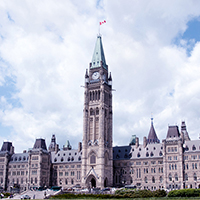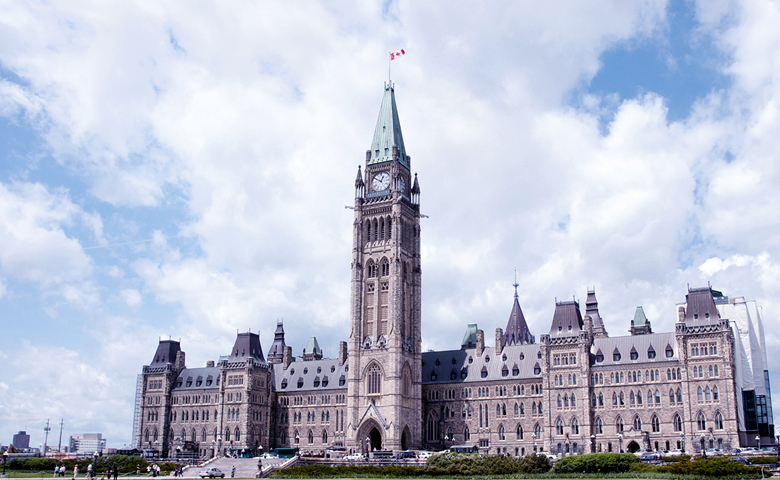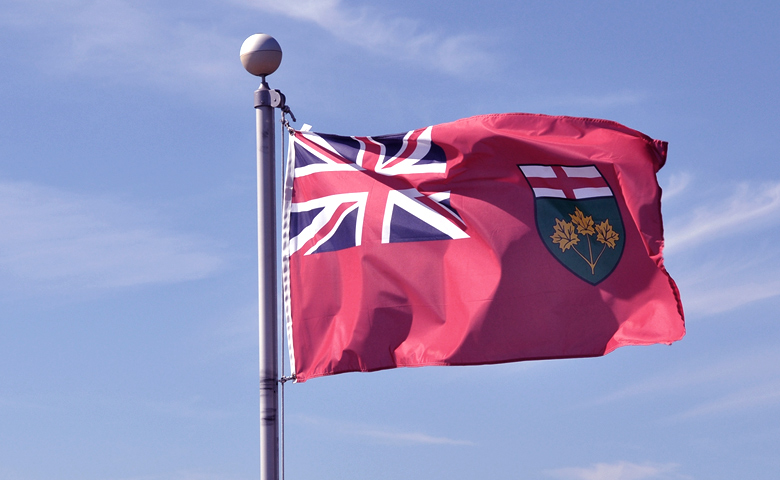On March 19, 2019, Finance Minister Bill Morneau presented the government’s 2019-2020 federal budget. This tax alert provides a summary of the tax measures proposed in the budget.
As many had predicted, this pre-election budget features many fresh spending promises, with little in terms of new tax legislation. Although the budget includes some smaller initiatives and technical changes, there are few surprises.
Overall, the most significant changes focus on:
- Skills upgrades and training
- Seniors’ retirement income
- Home-buying affordability
- Innovation
- Regulatory reform
- Country-wide broadband
connectivity
Proposals that might be of particular interest to Canadian businesses include the creation of a new national training benefit program, new funds for research and innovation, measures intended to support entrepreneurs and plans to streamline certain areas of federal regulation to reduce regulatory burden. In addition, provisions concerned with tightening international tax rules and increasing beneficial ownership transparency may prompt some companies to review and update their compliance practices.
The budget was relatively silent on matters related to current and pending trade agreements—with the exception of a promise of support for supply-managed farmers impacted by CETA and CTPPP—and it does not contain any proposals to address the gap in corporate tax rates between Canada and the United States, nor the existing tariffs on Canadian aluminum and steel.
A number of measures were announced where the legislative details have yet to be released—such as new limits on stock options and greater support for intergenerational business transfers—that are worth watching closely as the specifics develop.
Access our full Budget 2019 Summary below.
You could also like to read
Next article
Updated on January 23, 2024
There are numerous tax impacts that must be very carefully considered when deciding to leave Canada to live elsewhere.
Analyzing the termination of your tax residence is a question of fact. Generally, the Canada Revenue Agency will consider that you have left Canada if you sever your residential ties with Canada to create new ones in the host country.
Analyzing your residential status generally involves examining your significant and secondary residential ties.
Significant residential ties are:
- The location of your dwelling place;
- The location of your spouse’s and dependents’ dwelling place.
Secondary residential ties include:
- Economic and social ties with Canada (such as employment, financial accounts, interests in Canadian companies, social and recreational activities);
- Personal property in Canada (such as furniture, clothing, automobiles);
- Other ties (such as medical insurance coverage, drivers license, etc.).
Severing Ties with Canada, the Tax Implications
Departure tax
When you leave Canada, you are deemed to dispose of all of your property at its fair market value immediately before you cease to reside in Canada (even if you have not actually sold it). This deemed disposition triggers a departure tax on the gain accrued on this property before your departure.
Some property is specifically excluded from the deemed disposition rule, such as your residence, pension plans (including RRSPs and RRIFs), RESP, TFSA, FHSA and stock options.
Home Buyers’ Plan
If you withdrew funds from your RRSP as part of the Home Buyers’ Plan (HBP), the balance is payable at the earliest of the following two dates:
- Before the date you file an income tax return for the year you become a non-resident;
- 60 days after leaving Canada.
What do I need to do before leaving Canada?
1. List your property at the time of departure from Canada
If the fair market value of the property you own when you leave Canada is more than $25,000, you have to report this property to the Canada Revenue Agency or, failing this, you could be liable for a penalty of up to $2,500.
Some property is excluded from the mandatory reporting requirement, including:
- Cash;
- Pension plans (including RRSPs and RRIFs);
- RESPs;
- Personal use property (such as clothing, household effects, automobiles) with a fair market value of less than $10,000.
2. Notify Canadian payers of your change of tax residence status
If you plan to keep financial accounts in Canada that generate passive income (interest, dividends), you need to notify your financial institutions of your non-resident status so they can ensure appropriate deductions at source are made on income paid after you leave Canada and issue the appropriate tax slips at year-end.
3. Repay your Home Buyers’ Plan balance
You can repay your HBP balance by making RRSP contributions before you leave Canada. Otherwise, the HBP balance will be included in your taxable income in the year of departure.
4. File a departure tax return
You have to file a tax return by April 30th of the year following the year of your departure from Canada.
The purpose of this tax return is to:
- Record the date you leave Canada and change your residence status;
- Report property you own at the time you leave Canada;
- Prepare the appropriate tax election forms;
- Report and pay the departure tax or elect to defer payment of the tax by providing a sufficient guarantee to the tax authorities.
5. Talk to an international tax expert
Our team of international taxation experts can support your emigration process by providing integrated consulting and tax compliance services tailored to your situation.
08 Mar 2019 | Written by :
Next article
Citizens are increasingly looking for an environment in which they and their families can thrive and live happily, and municipalities are well aware of this.
In fact, elected officials monitor happiness index surveys in their municipalities. These surveys are a source of pride when the rankings are favourable and an asset in attracting new citizens to a municipality’s territory.
There is a trend in municipal and regional circles of promoting the attractiveness of a region in order to create wealth. Additionally, there is definitely a certain competitiveness in order to attract residents, businesses, merchants and tourists and it requires municipalities to reinvent themselves and find innovative ways to develop their service offering and territory.
Here are a few findings about cultural and demographic changes:
- Today’s citizens are complex, varied, changing and in constant movement: demographic changes, fragmented lifestyles and new cultural communities require extensive social cohesion and a diversified service offering.
- Citizens are looking for an environment that will allow them to respect the environment: active mobility and properly developed public transit, respect for green spaces, etc.
- Citizens want to be able to work and have accessible services and businesses nearby.
- Businesses are increasingly sensitive to the quality of the living environment for their employees when they are looking for a new location.
- For both citizens and businesses, it is important to have accessible, efficient and effective services and communications with their municipality and the various stakeholders.
Municipalities must therefore take these factors into consideration when reflecting on urban development and solutions to meet their citizens’ needs.
An environment in line with the new needs
Citizens have a vision that is constantly evolving. New requirements include the environment as a living space, ecological awareness and improved, accessible transportation.
Municipalities need to have a clear vision of the environment they want to offer their citizens in the coming decades. A vision for the environment and transportation, and creating or redesigning neighbourhoods are but some of the many challenges and options to become the city of tomorrow as their citizens envision it.
A lively and interactive public space
Increasingly, citizens want a vibrant public space for community and cultural activities. Living in their city or region must be an enjoyable and dynamic experience that, in turn, tourists can also benefit from.
Infrastructure is a major issue; however, it is important to see its renewal as an opportunity to reinvent the city and create public spaces that are inclusive and unifying, coupled with adequate entertainment, recreational and cultural opportunities in order to build a thriving living environment.
A creative and healthy economy
Although people may find a region and living environment appealing, they will always consider the economic vitality of the municipality and surrounding area when choosing a place to live.
Municipalities need to support local job creation initiatives and innovations. They must be attentive to and anticipate the demand to develop an offering the meets these new needs.
Constant interaction between citizens and elected officials
Today’s citizens want to be involved in their municipality’s development. We are witnessing a lifestyle disruption like never before. Increasingly mobile, they want to be informed at all times.
The municipality must have an attractive brand image and the ability to be accessible through digital communication channels. It must use every means available to reach out to citizens and involve them in decisions.
Synergy among all the stakeholders for the common good
It is essential to work together to meet the needs of citizens who want efforts to be pooled to achieve the same objective. Now, more than ever, consultation and interaction between the various stakeholders (elected officials, partners, citizens, organizations, etc.) are crucial.
It is in a municipality’ interest to adapt to the constant changes in its citizens’ expectations and needs, while combining its efforts to enhance its territory’s attractiveness by implementing the various mechanisms at its disposal. Municipalities that have already taken measures to showcase their attractiveness will most likely be able to reap the benefits of their efforts; for the others, a precise action plan will have to be drawn up in order to meet their objectives and preserve their appeal. Our experts can help you achieve these objectives.
05 Mar 2019 | Written by :
Pierre Fortin is a partner at Raymond Chabot Grant Thornton. He is your expert in Management...
See the profileNext article
Whether you have bitcoins or another digital currency, in Canada, cryptocurrency is considered to be an asset or property, not currency.
Cryptocurrency is increasingly being used for purchasing goods and services and for speculation or longer-term investment purposes.
Despite the many rumours that cryptocurrency transactions are not taxable, the Canada Revenue Agency (CRA) has been very clear on this matter and there is every reason to believe that it will be actively targeting such transactions in the coming years.
Cryptocurrency taxation according to the CRA
The CRA’s first official pronouncement on bitcoins was on December 23, 2013 and stated that the CRA does not consider digital currency as money issued by a central bank or country, such as the U.S. dollar for example. In the CRA’s opinion, cryptocurrency should be considered property for purposes of the Income Tax Act (ITA).
When goods or services are exchanged for merchandise (cryptocurrency), the value of the goods or services must be included in income. Depending on the nature of the transaction, taxpayers who dispose of cryptocurrency in exchange for goods or services may have to tax themselves on the appreciation in value of the cryptocurrency.
For example, a taxpayer who purchased a bitcoin for $1 and subsequently exchanged it for accounting services valued at $100 will have to self-assess tax on a gain of $99.
Similarly, an individual who transacts cryptocurrency and speculates on its value will have to pay tax depending on the nature of the transaction (i.e., business income or capital gain).
Determining the nature of transactions is important as this will have a direct impact on income taxes. The full amount of a gain on a “business income” type transaction will be taxed, whereas only 50% of the gain on a “capital” type transaction is taxed.
Similar measures apply in the case of a loss. The full amount of a loss on a “business income” type transaction can be applied against any type of income (e.g., employment income). On the other hand, only one half of a “capital” loss may be deducted, and it may only be applied against a capital gain.
Cryptocurrency is an asset
Like the United States, Australia and the Netherlands, the CRA has decided to consider cryptocurrency an asset or property rather than currency. Other countries, like Germany and Singapore have decided to consider it a currency like any other.
The CRA might decide to become more flexible in the future to adapt to new market realities. However, there is no indication that this could happen any time soon.
Why should I tax myself? The CRA won’t know…
The Canadian tax regime is based on the principle of self-assessment. As a tax resident of Canada, you are legally required to determine your amount of tax payable and to file an income tax return.
In our work as cryptocurrency tax specialists, we regularly come across individuals and businesses that don’t believe the CRA could be interested in them and prefer not to self-assess on that income. We believe that the opposite is true since the facts show without a doubt that the CRA is very interested in this new technology.
We strongly recommend that you report your cryptocurrency; otherwise, you could find yourself in the CRA’S crosshairs. Additionally, the CRA can go back as far as possible in the case of a voluntary failure to report income.
Our experts at Raymond Chabot Grant Thornton and Catallaxy are available to answer your questions and help you choose the best options.
This article was written in collaboration with Marc-Antoine Laurin.
22 Feb 2019 | Written by :
Stéphane Lauzon is a tax expert at Raymond Chabot Grant Thornton. Contact him today!
See the profile








